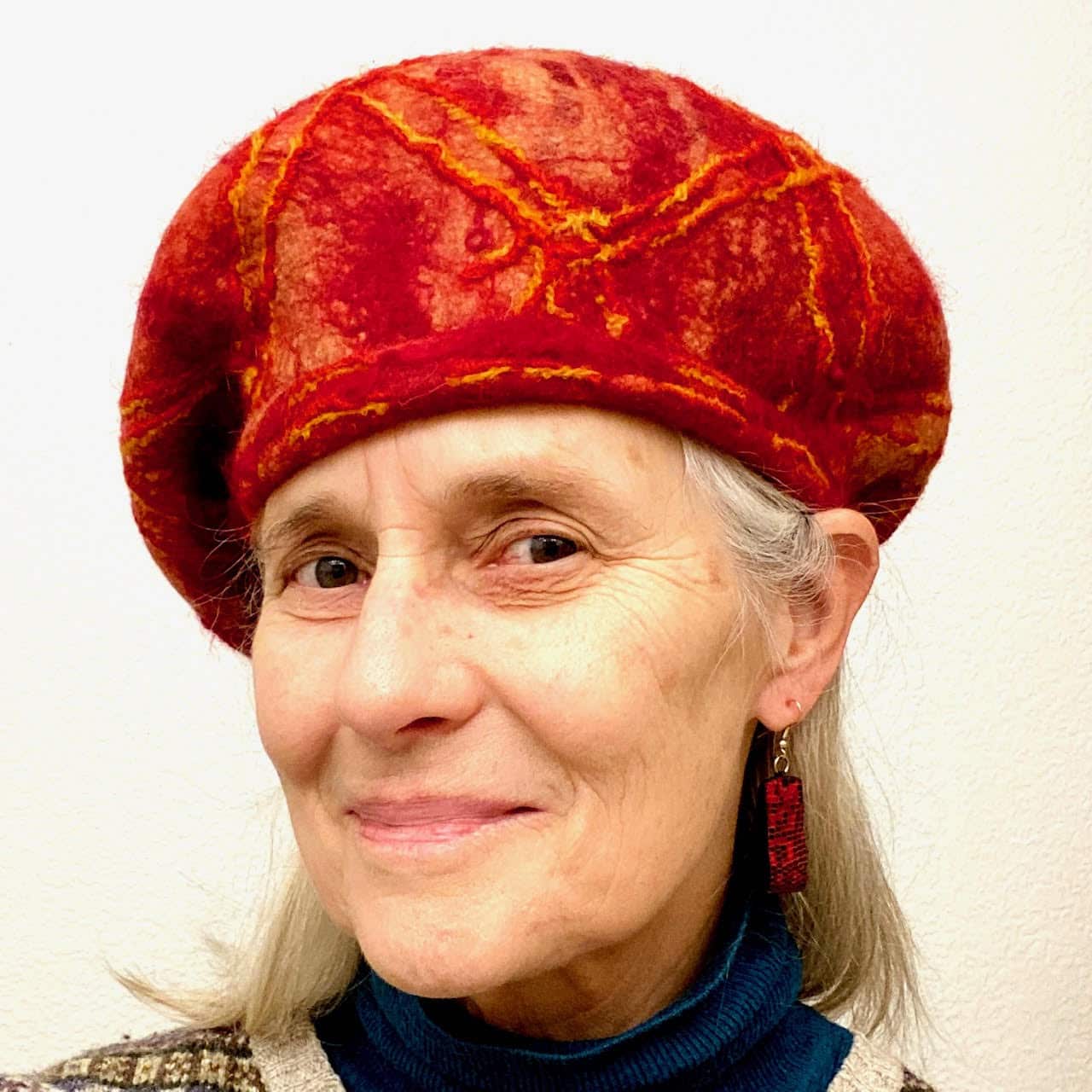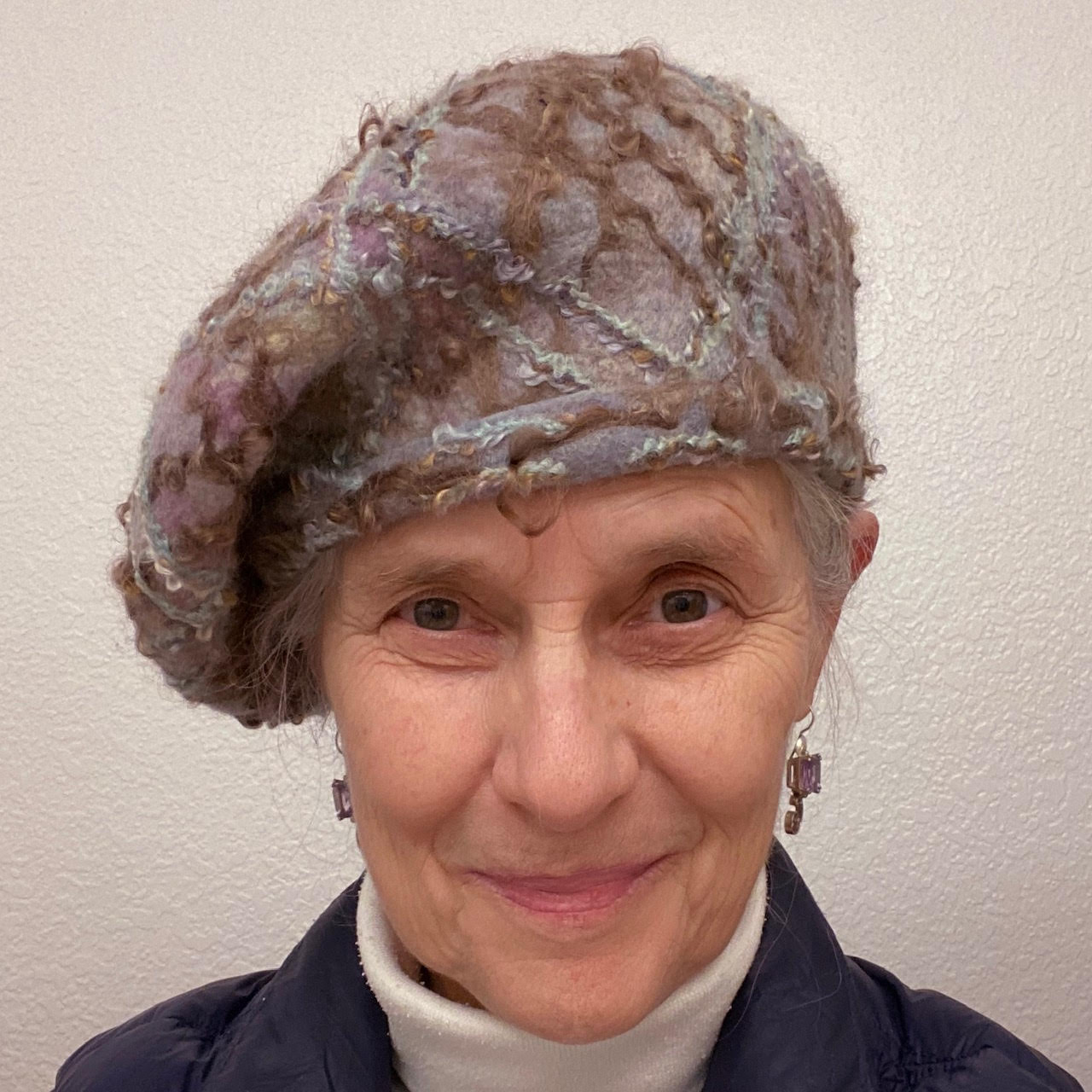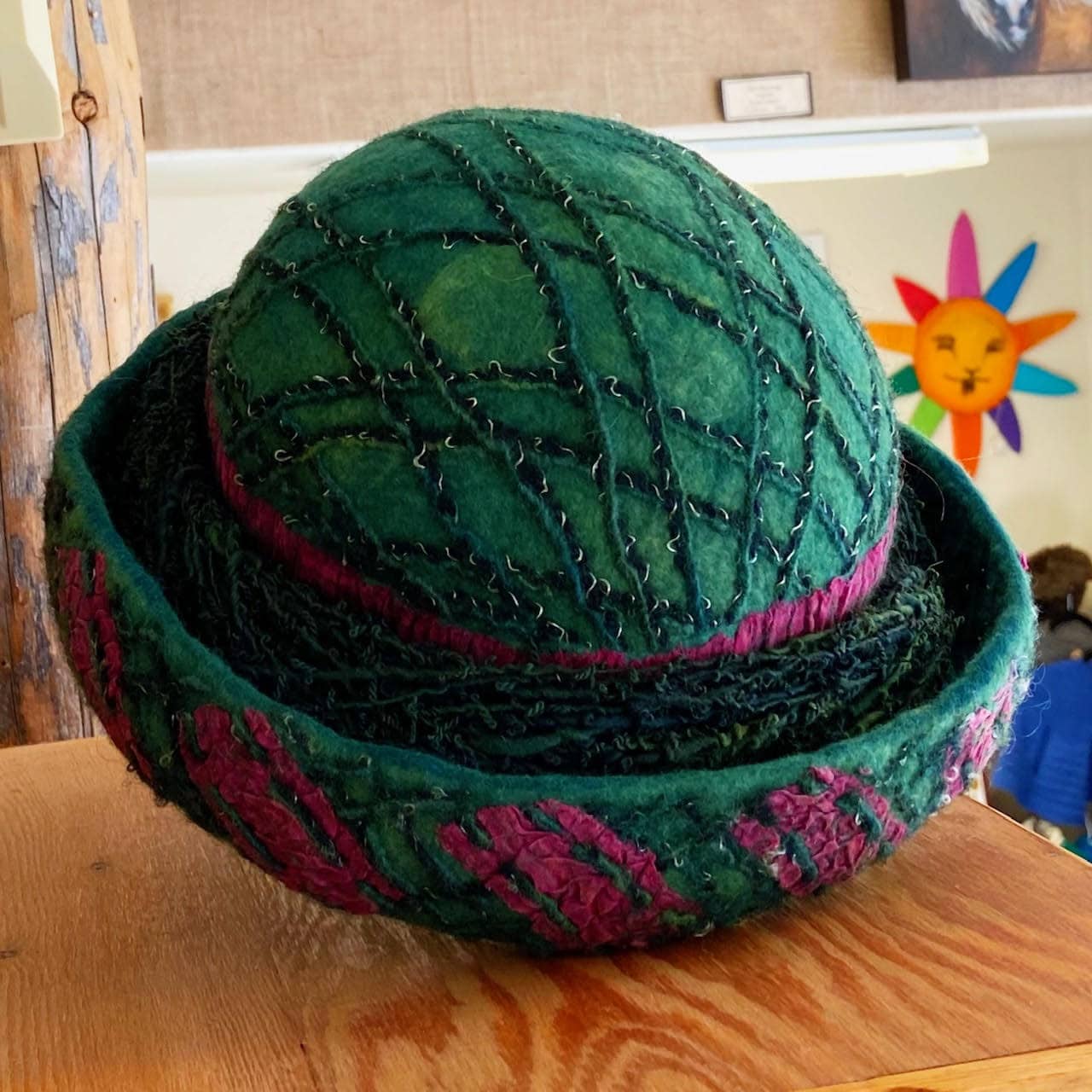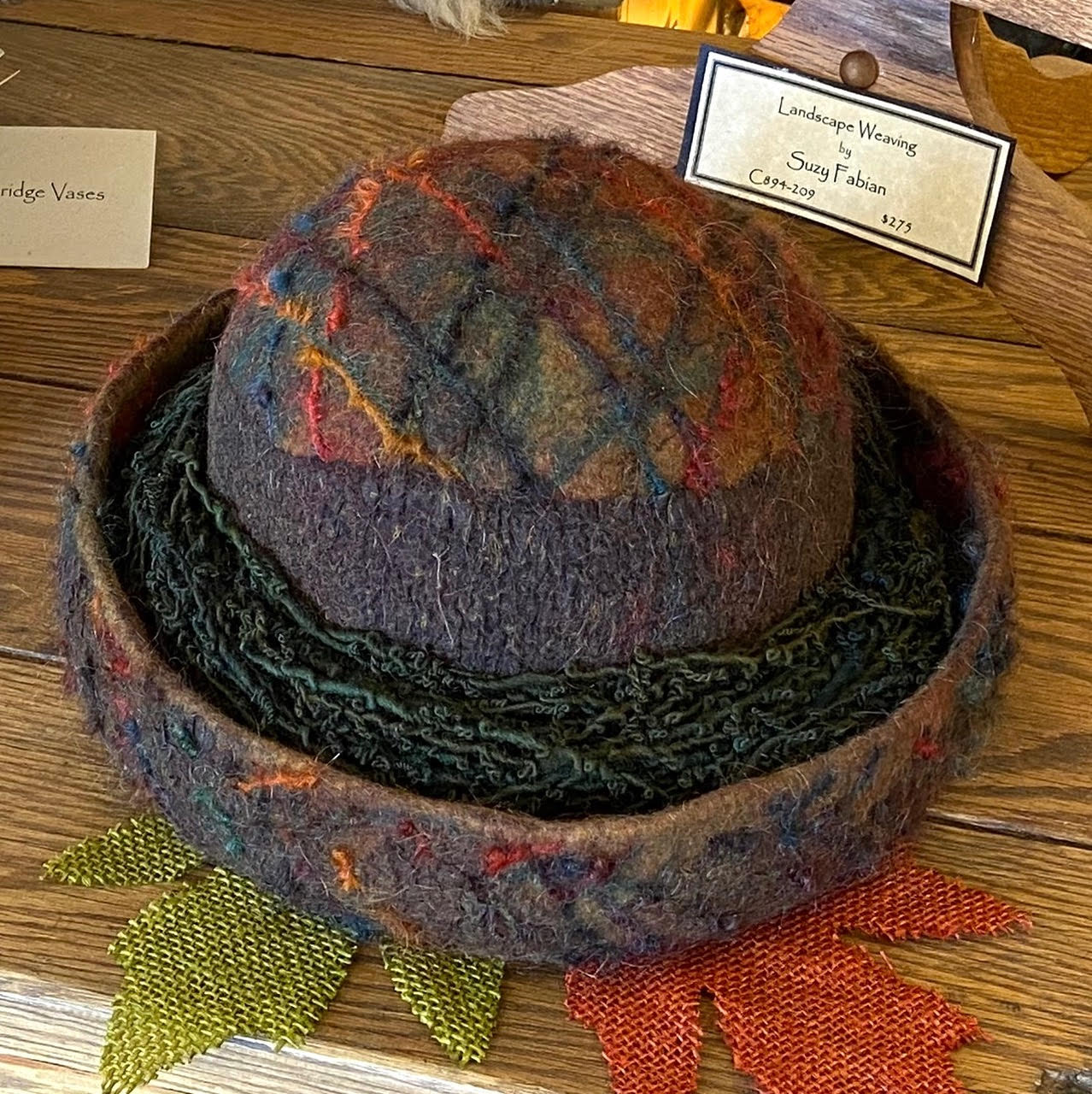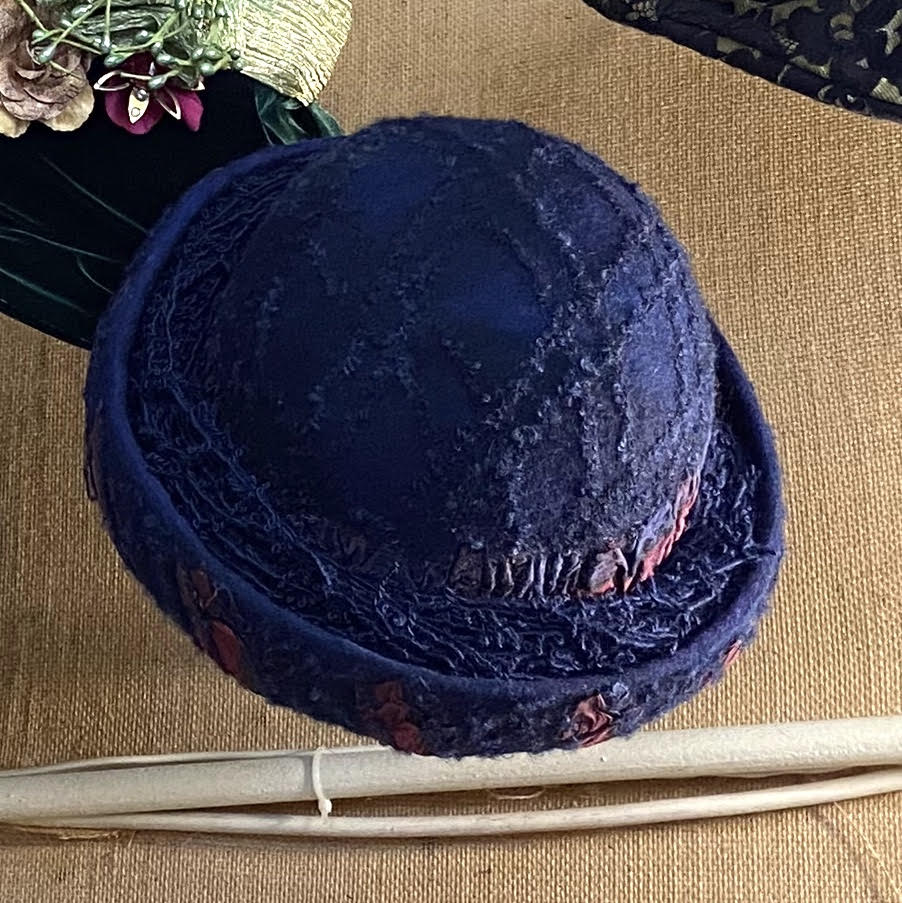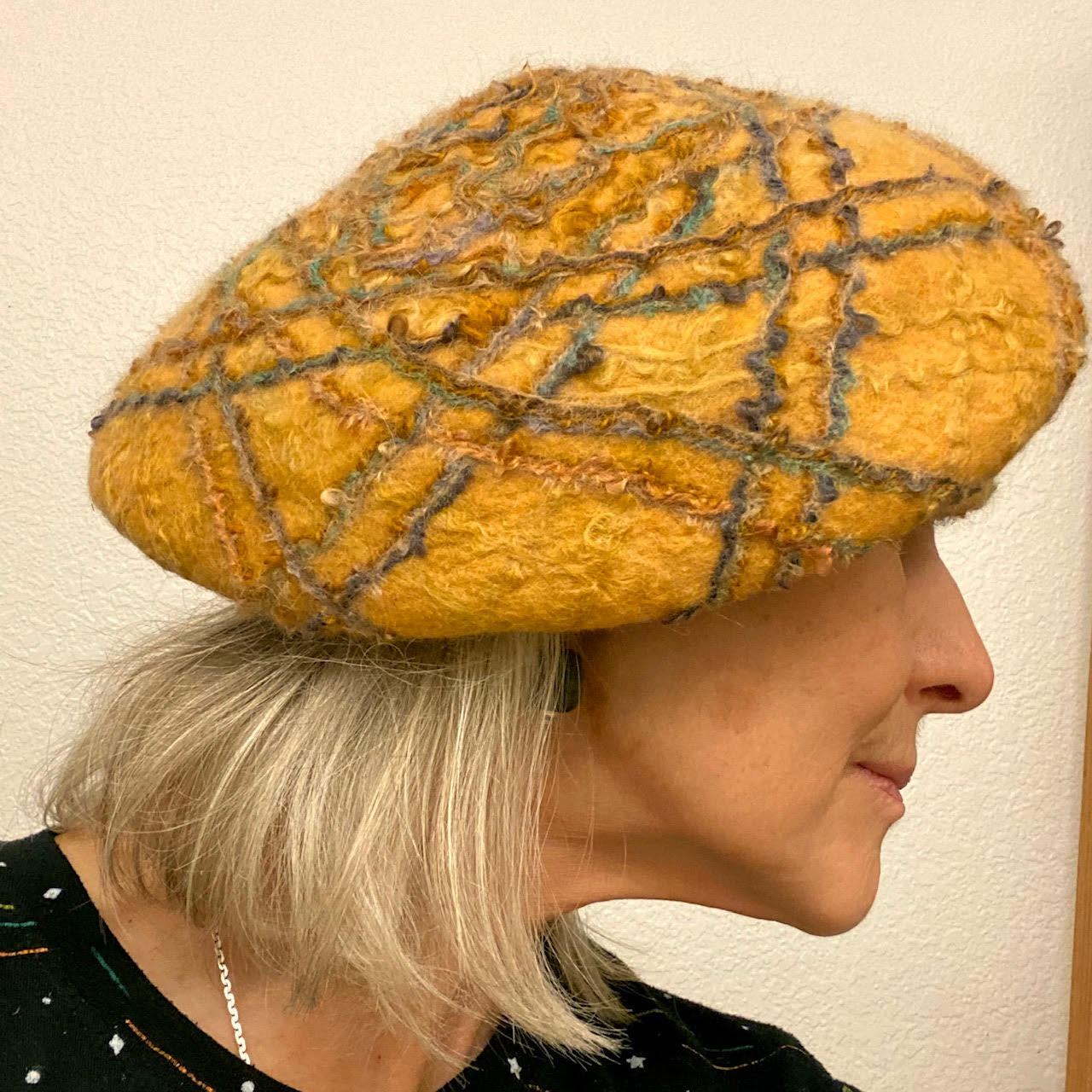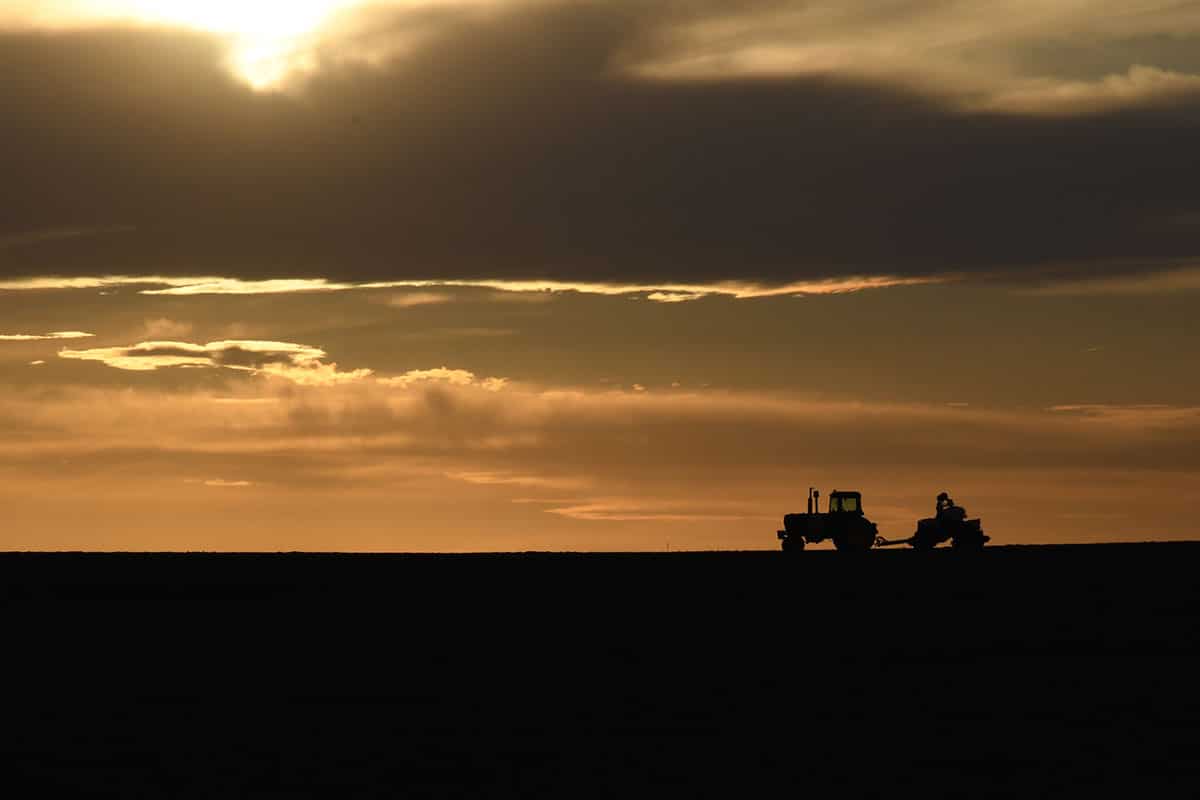Our Artist of the Week creates colorful and fun-to-feel felt hats and berets that are not only eye-catching but also keep your head warm. Discover why our Artist of the Week is passionate about felt-making and how she does it.
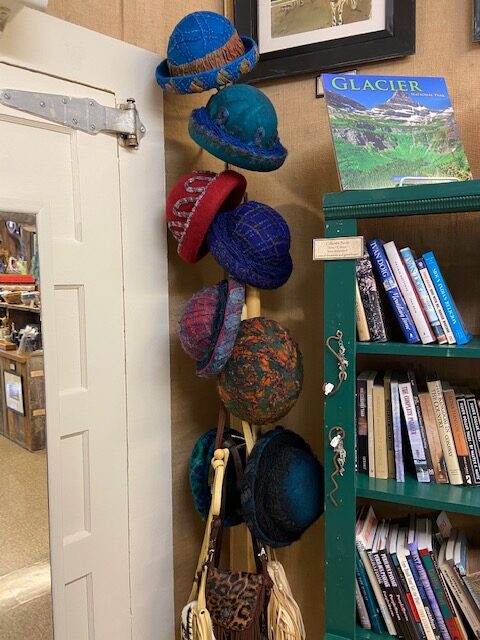
Making felt may be one of the most unusual arts, but art it definitely is, at least in the hands of Feltmaker Ruth Walker, at Columbia, Mo. Her felt hats and beret creations are wearable artwork.
Ruth discovered her passion for felting in 1992 when she was initially interested in spinning and weaving. She had taken classes and had purchased a loom. Her friend Sammy Eber introduced their spinning group to making felt balls in her washing machine, and as Ruth says, “I really loved it. I love how the loose wool grabs the yarn and distorts it.”
On one sticky hot day—104 degrees in the shade, Ruth says—Sammy showed several felters how to make hats over a ball, something she’d learned from master felters Beth Beede. “So there we were, using boiling water in that heat, making felt hats, and I decided I’d never do that again. But later that fall at the Bethel World Sheep & Wool Festival, I won a purple ribbon for that hat I’d made,” she says. “I thought to myself, ‘Okay, I’ll do this for a couple of years, then get back to weaving with my hand-spun yarn.’
“But in 1996 I went to an international felting conference in England, And I saw there that I would never exhaust the possibilities of felting.”
She’s never looked back. She still has that loom but hasn’t returned to it, although the spinning wheel has seen a lot of action in making the yarn bands that encircle many of her hats.
“I’ve largely stuck to felting hats because I could make a hat in a long day. It might take me two days today, but I like that I can make a finished product so quickly.”
She also likes the art of embellishing the hat as its being constructed, rather than afterward. She loves the textures created in embellishments integrated into the felt. In addition, “Each item is an interesting color study in itself, providing a challenge in putting colors together because the colors do blend into each other as the fibers mesh with each other.”
The feltmakers process starts with loose Merino sheep’s wool, which she purchases from New Franklin, Mo., shepherd Andy McMurry. “You can demonstrate the process for yourself by putting loose wool into a zip bag with loose yarns, adding water with a little detergent, and then rubbing or massaging the bag until the wool has grabbed all the yarn and shrinks in the water to about a quarter of its initial size, so much that the wool cannot tear apart anymore. The fibers irreversibly mesh together.”
To actually make the hats, loose wet wool is laid on the surface of a ball, then covered with pantyhose to hold it onto the surface of the ball so the ball-with-wool can be massaged until the fibers are well meshed. The bag-shaped felt is then removed from the ball, then kneaded extensively to enmesh the fibers more firmly, thereby shrinking the mass to roughly the size of a head. The wet bag-like piece is heated to stretch and shape it more easily into a hat.
Ruth has also made bags and scarves from felt, and she makes pin cushions, felt soap cocoons, and felt balls for ornamental displays, baby toys, or dryer balls. Some people have used her felt balls for back support.
“My grandkids just love throwing them down the stairs,” she adds.
Since 1996, Ruth has kept logbooks of everything she has made, every single hat, bag, or scarf, along with material samples, although these days the book, bound with a heavy rubber band, is so full, she struggles to lay it flat enough to take notes.
Ruth is moving toward exploring making more clothing items with felt. She’s taking workshops in clothing fit and making patterns. And she’s also teaching felt workshops. “I enjoy teaching,” she says. She has taught workshops in England and all over the country. She just returned from leading a workshop in Illinois, and while Covid slowed workshops down, she’s ready to return to lead them now. Follow her on Facebook to learn when her next one will be.
Although she used to sell her work around the country at fine craft shows, Ruth now sells her work at Bluestem in Columbia and also at Latigo and Lace in Augusta, Montana.
Ruth is a member of Best of Missouri Hands.
Related Posts
108 Missouri Wineries
On December 11, 2012, state officials announced that there were now one hundred and eight commercial wineries operating in Missouri.
Revitalizing Missouri Downtowns
Here’s how Missourians are working together to revitalize downtowns across the state.
This is Our Missouri
A photo project helps commemorate the bicentennial.

